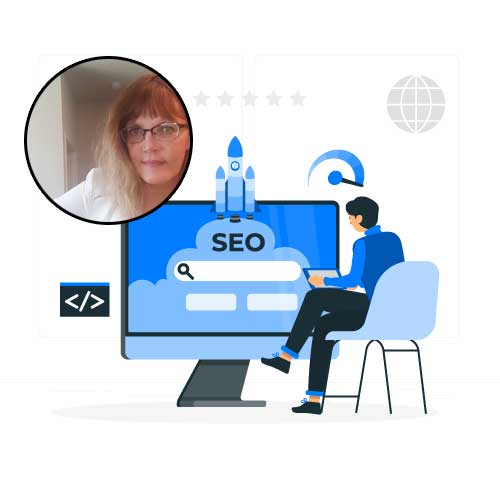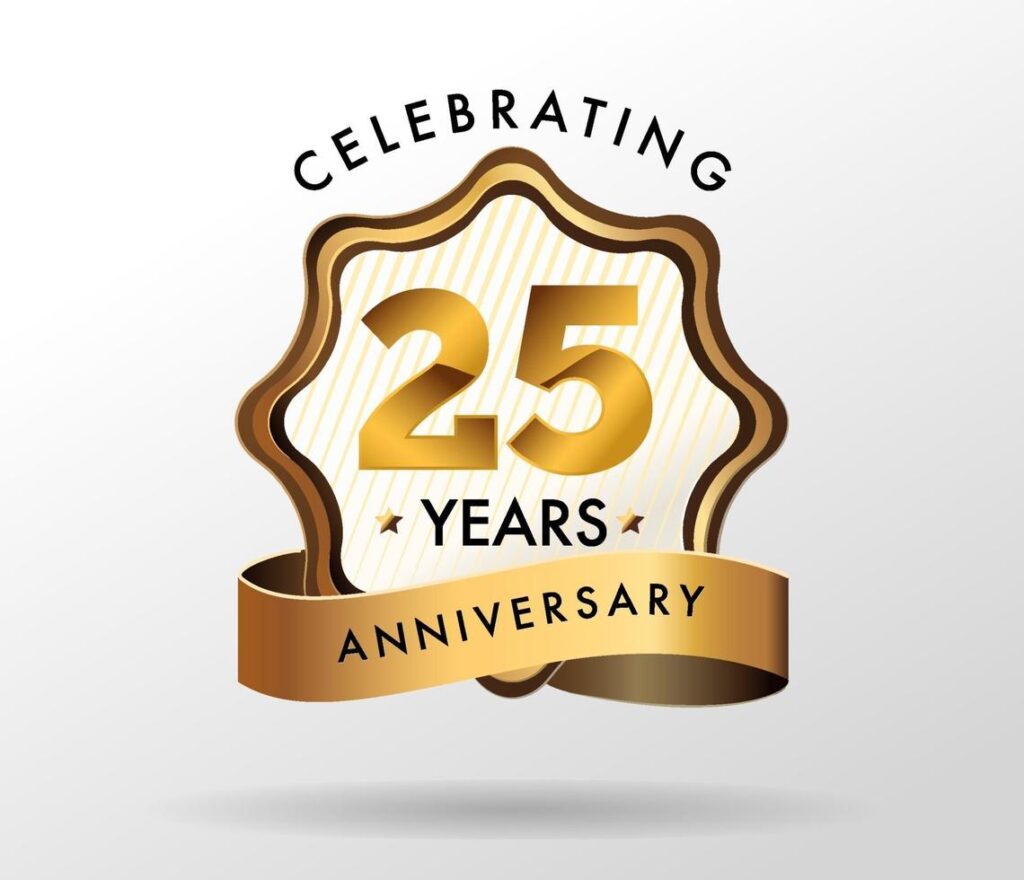
Jul 29, 2023 | Local SEO Expert
🚀 Boost Your Local Business Online with Expert SEO Marketing Services 🚀
Is your small local business struggling to stand out in today’s crowded digital landscape? Are you tired of seeing your competitors outrank you on search engines, leaving you behind in the dust?
🎯 Unlock Your Business Potential with Our Tailored SEO Solutions! 🎯
At Reno SEO, Marketing & Web Design, we specialize in helping small businesses like yours achieve online success through targeted and results-driven SEO strategies. With over 25 years of experience in the industry, our team of SEO experts is passionate about driving tangible growth and revenue for local businesses just like yours.
💼 Why Invest in SEO Marketing for Your Local Business? 💼
🔍 Enhanced Online Visibility: Reach potential customers actively searching for your products or services online, putting your business front and center.
📈 Increased Organic Traffic: Watch your website traffic soar as we optimize your online presence, attracting relevant visitors who are more likely to convert.
💰 Maximized ROI: Benefit from cost-effective marketing solutions that deliver long-term results, providing the best value for your marketing budget.
🎯 Tailored Strategies for Your Unique Business 🎯
We understand that every business is different. That’s why we take a personalized approach to every project we undertake. Our dedicated team will work closely with you to understand your business goals, target audience, and competitors. From there, we’ll craft a customized SEO plan to ensure you get the best possible results.
💡 Our Comprehensive SEO Services Include 💡
🔍 Keyword Research & Analysis: Identify the most relevant and high-impact keywords to target for increased search engine visibility.
📝 On-Page Optimization: Optimize your website’s content, meta tags, and structure to improve search rankings and user experience.
📈 Off-Page SEO & Link Building: Build authoritative backlinks and enhance your website’s reputation across the web.
📊 Local SEO & Google My Business: Attract local customers with tailored local SEO strategies and optimized GMB listings.
💬 Transparent Reporting & Analytics 💬
We believe in complete transparency with our clients. That’s why we provide regular reports that detail your campaign’s progress, organic traffic growth, keyword rankings, and more. Our team will also be available to discuss the results and answer any questions you may have at any time.
🏆 Partner with the Best in Local SEO Marketing 🏆
Don’t let your competitors dominate the online landscape. It’s time to level the playing field and position your small business for digital success. Let [Your SEO Marketing Company] be your trusted partner in this journey, guiding you to achieve exceptional results.
📞 Call us today at 775-870-0488 or fill out the form below to schedule a free consultation. Let’s take your local business to new heights together!

Jul 29, 2023 | Google My Business, google seo
Optimizing your Google My Business (GMB) listing is crucial for local SEO and increasing your online visibility. Here are ten tips to improve your GMB presence:
- Accurate Business Information: Ensure that your business name, address, phone number (NAP), and website URL are accurate, consistent, and match your official website.
- Choose the Right Categories: Select relevant categories that best describe your business. Google uses categories to understand what your business offers.
- Complete Business Description: Write a detailed and informative business description that includes relevant keywords and highlights your products, services, and unique selling points.
- Local Phone Number: Use a local phone number instead of a toll-free number to establish a strong local presence.
- Business Hours: Provide accurate opening hours for your business. Update them if there are any changes, especially during holidays or special occasions.
- Add Photos and Videos: Upload high-quality images and videos showcasing your products, services, team, and premises. This enhances your listing’s appeal and authenticity.
- Collect and Respond to Reviews: Encourage satisfied customers to leave positive reviews on your GMB listing. Engage with reviews, both positive and negative, in a professional and helpful manner.
- Enable Messaging: Allow customers to message you directly through your GMB listing. Respond to messages promptly to provide excellent customer service.
- Add Posts: Use the “Posts” feature to share updates, offers, events, and news related to your business. Posts can attract more attention and engagement.
- Use Attributes: Take advantage of the attribute feature to highlight specific offerings, such as “wheelchair accessible,” “free Wi-Fi,” or “outdoor seating.”
Remember that GMB is constantly evolving, and new features may be introduced over time. Regularly update your listing and monitor its performance to ensure you’re making the most of this valuable local SEO tool.

Jul 22, 2023 | Shopify Reno
Building a Shopify store is the first step to internet success… implementing a good marketing plan with SEO is super important.
Technical SEO is crucial for all types of websites, including Shopify stores, because it ensures that your online store is optimized to be easily crawled, indexed, and understood by search engines. Technical SEO focuses on the backend aspects of your website and the technical elements that impact its search engine performance. Here’s why technical SEO is important for Shopify stores:
- Search Engine Visibility: Technical SEO helps search engines like Google understand the structure and content of your Shopify store. When search engines can efficiently crawl and index your site, they are more likely to include your web pages in search results, increasing your store’s visibility to potential customers.
- Page Loading Speed: Website speed is a critical factor for both search engine rankings and user experience. Technical SEO helps optimize page loading times by reducing unnecessary code, compressing images, and improving server response times. A faster website is more likely to rank higher in search results and keep visitors engaged.
- Mobile-Friendliness: Shopify stores must be responsive and mobile-friendly, as more and more users access the internet through mobile devices. Technical SEO ensures that your store’s design and layout adapt well to various screen sizes, enhancing the user experience and positively affecting your search rankings.
- Structured Data Markup: Implementing structured data markup (such as Schema.org) is part of technical SEO. It helps search engines better understand the content on your website and display relevant rich snippets in search results, improving click-through rates and visibility.
- Canonical URLs: Duplicate content can hurt your SEO efforts. Technical SEO on Shopify involves using canonical tags to indicate the preferred version of a page when you have multiple URLs with similar content, preventing potential duplicate content issues.
- XML Sitemaps: An XML sitemap is a file that lists all the pages on your Shopify store, making it easier for search engines to discover and index your content. A well-optimized sitemap ensures that all essential pages are included and helps search engines understand your website’s structure.
- URL Structure: Technical SEO involves creating clean, descriptive, and user-friendly URLs that also contain relevant keywords. This helps search engines and users understand what the page is about and can improve your click-through rates in search results.
- SSL Certificate: Having an SSL certificate installed on your Shopify store ensures that data transmitted between your website and visitors is encrypted and secure. Google considers HTTPS as a ranking factor, so having a secure site is beneficial for SEO.
By paying attention to technical SEO aspects, you lay a strong foundation for your Shopify store’s SEO strategy. It helps search engines better understand your content, improves user experience, and increases the likelihood of higher rankings in search results, ultimately driving more organic traffic to your online store.

Jul 21, 2023 | SEO
*Note If you are a web designer, needing help with local SEO, ask me about my partner program, where I help you rank locally for web design keywords, in return I ask for SEO clients.
A well-executed SEO marketing plan can significantly boost a local web designer’s online visibility, attract targeted leads, and ultimately drive more business. In this three-month plan, we’ll outline key strategies and actions to help the web designer improve their search engine rankings and establish a strong online presence within their local market.
Month 1: Website Audit and Local Keyword Research
- Conduct a Comprehensive Website Audit: Perform a thorough audit of the web designer’s website to identify any technical issues, broken links, and opportunities for improvement. Ensure the site is mobile-friendly, loads quickly, and has a clear site structure.
- Local Keyword Research: Identify relevant local keywords that potential clients may use when searching for web design services. Focus on keywords with high search volume and low competition within the local market.
- On-Page Optimization: Implement on-page SEO best practices by incorporating the selected local keywords into the website’s meta titles, meta descriptions, header tags, and content.
- Google My Business (GMB) Optimization: Claim and optimize the web designer’s Google My Business listing. Ensure all business information, including address, phone number, website URL, and business hours, is accurate and up-to-date.
- Local Citations and Directory Listings: Submit the web designer’s business information to relevant local directories and citation sites. Consistency in business details across these platforms is essential for local SEO.
- Content Marketing: Create valuable and informative blog posts or articles related to web design topics that resonate with the local audience. Share these articles on social media platforms and encourage engagement.
Month 2: Link Building and Local Outreach
- Link Building: Develop a link-building strategy to acquire high-quality backlinks from local businesses, industry partners, and community organizations. Building a strong backlink profile can improve the web designer’s domain authority.
- Local Outreach and Networking: Attend local networking events, workshops, and seminars related to web design or small businesses. Establish relationships with local business owners, and explore collaboration opportunities.
- Testimonials and Case Studies: Request testimonials from satisfied clients and create compelling case studies showcasing successful web design projects. Display these on the website to build trust and credibility.
- Local Social Media Engagement: Engage with the local community on social media platforms. Respond to comments, messages, and reviews promptly, and share valuable content that showcases the web designer’s expertise.
- Local Partnerships: Explore partnerships with local businesses, such as marketing agencies, branding firms, or digital consultants, to offer web design services as part of their packages.
Month 3: Performance Monitoring and Continuous Improvement
- Google Analytics and Search Console: Set up Google Analytics and Google Search Console to monitor website traffic, user behavior, and search performance. Analyze data regularly to identify areas for improvement.
- Performance Optimization: Use insights from analytics tools to optimize underperforming web pages, update content, and fine-tune SEO strategies for better results.
- Local Reviews and Reputation Management: Encourage satisfied clients to leave positive reviews on Google and other relevant review platforms. Respond to reviews, both positive and negative, professionally and courteously.
- Local Advertising (Optional): Consider running targeted local advertising campaigns on platforms like Google Ads or social media to boost visibility within the local market.
- Continued Content Marketing: Maintain a consistent content marketing strategy, creating and sharing valuable content to attract and engage the local audience.
Conclusion:
By following this three-month local SEO marketing plan, the web designer can improve their online presence, attract more local leads, and establish themselves as a reputable player in the local web design industry. It’s important to remember that SEO is an ongoing process, and continuous monitoring, optimization, and engagement with the local community will be key to achieving long-term success.

Jul 21, 2023 | SEO
SEO is a complex and ever-evolving field, and the specific actions needed for a website can vary depending on its niche, competition, and current state. Also, search engine algorithms change frequently, so some tactics may become outdated over time. Nevertheless, here is a list of 200 actionable SEO tasks that can be considered:
- Perform keyword research to identify relevant and high-volume search terms to target with SEO.
- Optimize meta titles and descriptions for target keywords.
- Create high-quality, unique, and engaging content.
- Use H1 tags to highlight page titles and include target keywords.
- Add relevant and descriptive alt tags to images.
- Optimize URL structures to be user-friendly and include keywords.
- Ensure your website is mobile-friendly and responsive.
- Improve page load speed for better user experience.
- Enable HTTPS to ensure a secure connection.
- Create an XML sitemap and submit it to Google Search Console.
- Submit your website to Google Search Console and Bing Webmaster Tools.
- Monitor crawl errors and fix broken links.
- Implement a breadcrumb navigation system.
- Use internal linking to connect related content.
- Optimize anchor text for internal links.
- Conduct competitor analysis to identify opportunities.
- Optimize the website’s meta robots directives (indexing and following).
- Use structured data markup (schema.org) to enhance search results.
- Create a Google My Business listing for local SEO.
- Encourage online reviews and respond to them.
- Build high-quality backlinks from authoritative websites.
- Remove or disavow low-quality and spammy backlinks.
- Write guest posts on relevant websites to build authority.
- Optimize page content for featured snippets.
- Implement breadcrumb schema to display breadcrumbs in search results.
- Use a responsive design for better mobile usability.
- Optimize images for smaller file sizes without sacrificing quality.
- Leverage browser caching to speed up load times for repeat visitors.
- Optimize meta tags for social media sharing.
- Implement lazy loading for images and videos to improve load speed.
- Create an informative and compelling “About Us” page.
- Use heading tags (H2, H3, etc.) to structure content effectively.
- Optimize video content and provide transcripts for accessibility.
- Monitor and fix duplicate content issues.
- Remove or consolidate thin and low-quality content.
- Optimize website architecture for easy navigation.
- Implement AMP (Accelerated Mobile Pages) for better mobile performance.
- Set up 301 redirects for removed or changed URLs.
- Create a comprehensive and updated “Privacy Policy” page.
- Set up goals and conversion tracking in Google Analytics.
- Implement a clear call-to-action on every page.
- Use rich media like infographics and videos to enhance content.
- Optimize category and tag pages for relevant keywords.
- Monitor and improve the website’s click-through rate (CTR) in search results.
- Use social media to promote and share your content.
- Add a “Contact Us” page with accurate contact information.
- Implement breadcrumb navigation to help users understand site structure.
- Conduct regular website audits to identify and fix issues.
- Optimize images with descriptive file names and alt tags.
- Implement lazy loading for images and videos to improve page speed.
- Create and optimize product pages with unique content and descriptions.
- Implement rel=”canonical” tags to handle duplicate content.
- Conduct user testing to improve website usability.
- Set up and optimize Google Analytics Enhanced Ecommerce tracking.
- Leverage local SEO strategies for businesses targeting specific areas.
- Regularly update and refresh old content to keep it relevant.
- Use Google’s Search Console Performance report to identify keyword opportunities.
- Optimize website navigation to help users find information easily.
- Write compelling meta descriptions to improve click-through rates.
- Implement a custom 404 error page with helpful links.
- Conduct A/B testing to optimize website elements.
- Create and optimize FAQ pages for common user queries.
- Utilize social sharing buttons on content pages.
- Optimize page headings to include target keywords.
- Use descriptive and keyword-rich URLs.
- Monitor website analytics and make data-driven decisions.
- Implement a content marketing strategy to attract backlinks.
- Optimize your website for voice search queries.
- Improve website accessibility for users with disabilities.
- Utilize branded anchor text for link building.
- Conduct keyword mapping to ensure each page targets specific keywords.
- Write engaging meta descriptions to entice users to click.
- Use LSI keywords (Latent Semantic Indexing) to diversify keyword usage.
- Create and optimize an XML sitemap.
- Optimize the site for local search using location-based keywords.
- Monitor and improve website dwell time (time spent on page).
- Use a unique, descriptive, and keyword-rich title tag for each page.
- Create a mobile app if relevant to your business.
- Implement geotargeting for local businesses.
- Use SSL encryption to secure user data and boost trust.
- Optimize category and archive pages for search engines.
- Conduct regular competitor analysis to stay ahead.
- Optimize your website’s 404 error page with helpful content and links.
- Use social proof (testimonials, reviews) to build trust.
- Optimize site search functionality for user experience.
- Implement breadcrumb navigation to aid user navigation.
- Optimize images and videos for fast loading times.
- Create and optimize content for long-tail keywords.
- Optimize meta descriptions for improved click-through rates.
- Monitor website performance using Google Analytics and other tools.
- Implement hreflang tags for international SEO.
- Use responsive design to ensure mobile-friendliness.
- Optimize website URLs for readability and keywords.
- Optimize for featured snippets by providing concise answers to common questions.
- Use user-generated content to build trust and engagement.
- Create and optimize content for Google Discover.
- Utilize social media marketing to reach a wider audience.
- Optimize product pages with high-quality images and detailed descriptions.
- Conduct link reclamation to fix broken backlinks.
- Use a secure and reputable hosting provider.
- Optimize website navigation for a smooth user experience.
- Implement breadcrumb navigation for easy navigation.
- Use keyword-rich anchor text for internal linking.
- Optimize site speed for better user experience.
- Conduct user testing to identify and fix usability issues.
- Implement breadcrumbs to aid user navigation.
- Optimize internal linking for better crawlability.
- Use a clear and concise URL structure.
- Create and optimize content for long-tail keywords.
- Utilize social media to promote and share your content.
- Optimize product pages with high-quality images and descriptions.
- Conduct link reclamation to fix broken backlinks.
- Use a secure and reputable hosting provider.
- Optimize website navigation for a smooth user experience.
- Implement breadcrumb navigation for easy navigation.
- Use keyword-rich anchor text for internal linking.
- Optimize site speed for better user experience.
- Conduct user testing to identify and fix usability issues.
- Implement breadcrumbs to aid user navigation.
- Optimize internal linking for better crawlability.
- Use a clear and concise URL structure.
- Create and optimize content for long-tail keywords.
- Utilize social media to promote and share your content.
- Optimize product pages with high-quality images and descriptions.
- Conduct link reclamation to fix broken backlinks.
- Use a secure and reputable hosting provider.
- Optimize website navigation for a smooth user experience.
- Implement breadcrumb navigation for easy navigation.
- Use keyword-rich anchor text for internal linking.
- Optimize site speed for better user experience.
- Conduct user testing to identify and fix usability issues.
- Implement breadcrumbs to aid user navigation.
- Optimize internal linking for better crawlability.
- Use a clear and concise URL structure.
- Create and optimize content for long-tail keywords.
- Utilize social media to promote and share your content.
- Optimize product pages with high-quality images and descriptions.
- Conduct link reclamation to fix broken backlinks.
- Use a secure and reputable hosting provider.
- Optimize website navigation for a smooth user experience.
- Implement breadcrumb navigation for easy navigation.
- Use keyword-rich anchor text for internal linking.
- Optimize site speed for better user experience.
- Conduct user testing to identify and fix usability issues.
- Implement breadcrumbs to aid user navigation.
- Optimize internal linking for better crawlability.
- Use a clear and concise URL structure.
- Create and optimize content for long-tail keywords.
- Utilize social media to promote and share your content.
- Optimize product pages with high-quality images and descriptions.
- Conduct link reclamation to fix broken backlinks.
- Use a secure and reputable hosting provider.
- Optimize website navigation for a smooth user experience.
- Implement breadcrumb navigation for easy navigation.
- Use keyword-rich anchor text for internal linking.
- Optimize site speed for better user experience.
- Conduct user testing to identify and fix usability issues.
- Implement breadcrumbs to aid user navigation.
- Optimize internal linking for better crawlability.
- Use a clear and concise URL structure.
- Create and optimize content for long-tail keywords.
- Utilize social media to promote and share your content.
- Optimize product pages with high-quality images and descriptions.
- Conduct link reclamation to fix broken backlinks.
- Use a secure and reputable hosting provider.
- Optimize website navigation for a smooth user experience.
- Implement breadcrumb navigation for easy navigation.
- Use keyword-rich anchor text for internal linking.
- Optimize site speed for better user experience.
- Conduct user testing to identify and fix usability issues.
- Implement breadcrumbs to aid user navigation.
- Optimize internal linking for better crawlability.
- Use a clear and concise URL structure.
- Create and optimize content for long-tail keywords.
- Utilize social media to promote and share your content.
- Optimize product pages with high-quality images and descriptions.
- Conduct link reclamation to fix broken backlinks.
- Use a secure and reputable hosting provider.
- Optimize website navigation for a smooth user experience.
- Implement breadcrumb navigation for easy navigation.
- Use keyword-rich anchor text for internal linking.
- Optimize site speed for better user experience.
- Conduct user testing to identify and fix usability issues.
- Implement breadcrumbs to aid user navigation.
- Optimize internal linking for better crawlability.
- Use a clear and concise URL structure.
- Create and optimize content for long-tail keywords.
- Utilize social media to promote and share your content.
- Optimize product pages with high-quality images and descriptions.
- Conduct link reclamation to fix broken backlinks.
- Use a secure and reputable hosting provider.
- Optimize website navigation for a smooth user experience.
- Implement breadcrumb navigation for easy navigation.
- Use keyword-rich anchor text for internal linking.
- Optimize site speed for better user experience.
- Conduct user testing to identify and fix usability issues.
- Implement breadcrumbs to aid user navigation.
- Optimize internal linking for better crawlability.
- Use a clear and concise URL structure.
- Regularly review and adjust your SEO strategies based on analytics and results.
Need help ranking your website in Google and other search engines? Text or call Top SEO Expert, Sandy Rowley at 775-870-0488.
Follow her on LinkedIn here:https://www.linkedin.com/in/seo-consultant-best/
Image by storyset on Freepik









